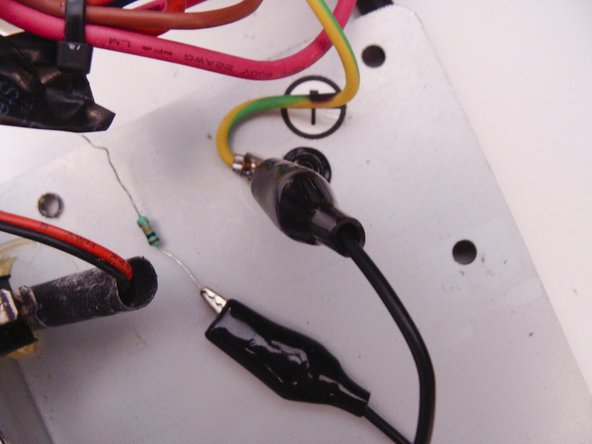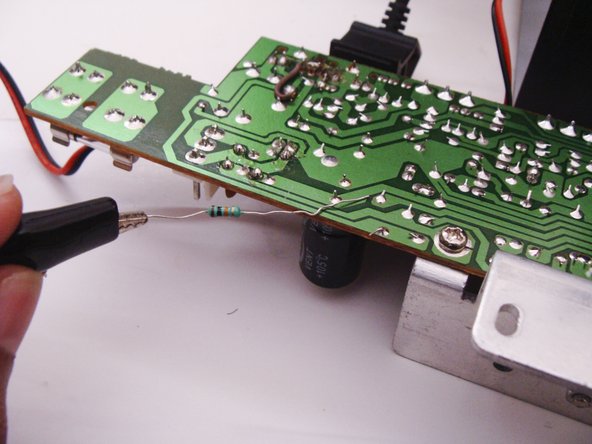crwdns2931527:0crwdnd2931527:0crwdnd2931527:0crwdnd2931527:0crwdne2931527:0
crwdns2935425:06crwdne2935425:0
crwdns2931653:06crwdne2931653:0






Discharging capacitors
-
Connect one end of an alligator lead to the chassis ground, and the other lead to an 10K ohm resistor
-
Identify the power supply capacitors and touch the 10K ohm resistor's open lead to each of it's leads for a few seconds
-
If you are paranoid, you may check with a voltmeter to ensure that the capacitors are safely discharged
-
It should now be safe to work on your amplifier's circuit board
crwdns2944171:0crwdnd2944171:0crwdnd2944171:0crwdnd2944171:0crwdne2944171:0